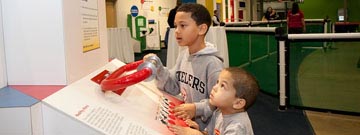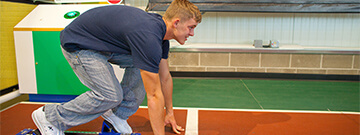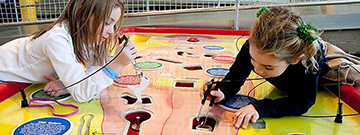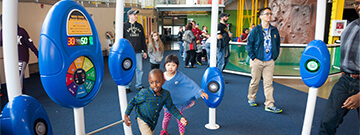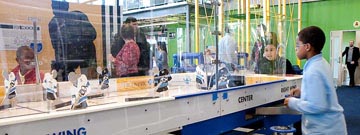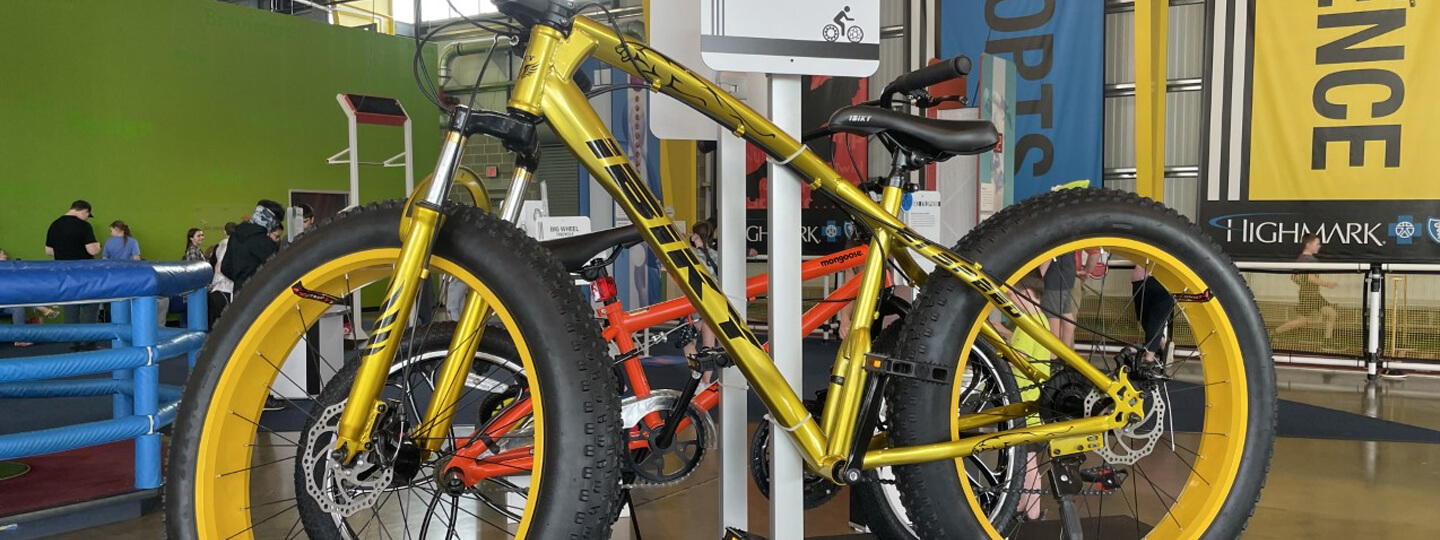
Science of BIKES
From schoolyards and mountain trails to bustling city streets – we encounter bicycles nearly every day. Since its inception in the late 19th century, the bicycle has affected how people live, work, and play. Its popularity has only grown over time, and it is as relevant today as it was 100 years ago.
Because the bicycle is so commonplace, it’s easy to take for granted how it actually works. The bicycle is an elegant example of basic science principles – forces and motion, energy, material science. Carnegie Science Center is proud to present Science of BIKES, an exhibition that pays tribute to this remarkable machine and the science behind it.
Interactive science exhibits, include:
- Cycloid Ramp – Visitors place a ball on top of each track to find the fastest path between two points. The interactive piece is modeled after the famous Brachistochrone problem, a classical problem in calculus.
- Bike Body Xylophone – A series of tubes of different materials is ‘played’ by the visitor to explore why bikes can be made from different alloys.
- Gear Table – For younger visitors, a simple table of magnetic gears allows them to experiment with simple interlocking mechanisms of their own making.



